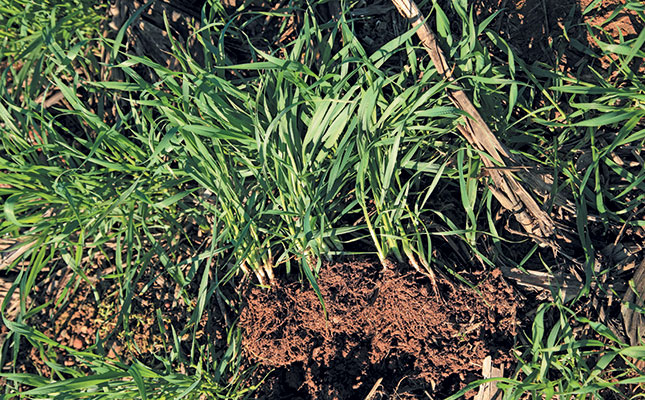Integrated Pest And Disease Management In Organic Agriculture
Today, I want to talk about an important topic that affects our crops and farming practices—integrated disease management in crops. As farmers and gardeners, it is crucial for us to understand and implement effective strategies to prevent and manage diseases in our crops. By taking a holistic approach to disease prevention and control, we can ensure the health and productivity of our crops.

Integrated disease management is a comprehensive approach that combines various strategies to manage crop diseases. It involves the use of cultural, biological, and chemical practices to prevent and control diseases. By integrating these practices, we can reduce the reliance on single control methods and minimize the negative impact on the environment.
What is Integrated Disease Management?
Integrated disease management (IDM) involves the implementation of multiple practices to prevent and control plant diseases. It aims to minimize disease incidence, severity, and spread while promoting the overall health and productivity of crops. IDM takes into account various factors such as crop rotation, resistant varieties, sanitation, biological control agents, and targeted chemical treatments.
Ideas For Implementing Integrated Disease Management:
Implementing integrated disease management requires careful planning and implementation. Here are some ideas to get you started:
- Crop Rotation: Rotate your crops regularly to break disease cycles. This helps to reduce the build-up of diseases in the soil and prevents the continuous cultivation of the same susceptible crop.
- Resistant Varieties: Choose crop varieties that are resistant to common diseases in your area. Resistant varieties have genetic traits that make them less susceptible to certain diseases, reducing the need for chemical treatments.
- Sanitation: Practice good sanitation measures by removing and destroying infected plant material. This prevents the spread of diseases to healthy plants and reduces their ability to overwinter and survive.
- Biological Control Agents: Use beneficial organisms such as predatory insects, parasitic nematodes, or microbial agents to control pests and diseases. These natural enemies can help suppress disease-causing organisms.
- Targeted Chemical Treatments: When necessary, use chemical treatments strategically and judiciously. Follow label instructions carefully and use products that specifically target the problem while minimizing harm to beneficial organisms and the environment.
Recommendations For Successful Integrated Disease Management:
Here are some recommendations to ensure the success of integrated disease management in your crops:
- Regular Monitoring: Keep a close eye on your crops for any signs of diseases or pests. Early detection is crucial for effective disease management.
- Knowledge and Education: Stay updated on the latest research and best practices for disease management. Attend workshops, read reputable sources, and consult with agricultural experts to enhance your knowledge.
- Record Keeping: Maintain a record of crop diseases, their incidence, and management strategies used. This information will help you make informed decisions in the future.
- Collaboration: Network with other farmers and professionals in the agricultural industry. Sharing experiences and knowledge can provide valuable insights and solutions to common disease problems.
- Adaptation: Adapt your disease management strategies based on the specific needs and requirements of your crops. Different crops, regions, and environmental conditions may require different approaches.
Listicle of Tips for Effective Integrated Disease Management:
1. Use resistant crop varieties whenever possible.
2. Practice proper field sanitation to remove diseased plant material.
3. Incorporate crop rotation to break disease cycles.
4. Implement proper irrigation and drainage systems to avoid creating favorable conditions for diseases.
5. Consider biological control agents to control pests and diseases in an eco-friendly manner.
6. Provide adequate spacing between plants to improve airflow and reduce humidity, which can minimize disease spread.
7. Apply fungicides or other chemical treatments only when necessary and in accordance with label instructions.
8. Use organic mulches to suppress weeds and maintain soil moisture, reducing stress on plants and minimizing disease susceptibility.
9. Regularly scout your crops for pest and disease presence, and take action as soon as an issue is identified.
10. Educate yourself and your team about common diseases in your area and their management techniques.
Question & Answer:
Q: Can integrated disease management completely eliminate crop diseases?
A: While integrated disease management can significantly reduce the incidence and severity of crop diseases, it cannot completely eliminate them. However, by implementing these strategies, you can effectively manage and control diseases, mitigating their impact on crop health and productivity.
Summary of Integrated Disease Management:
Integrated disease management in crops is a holistic approach that combines multiple strategies to prevent and control plant diseases. By implementing cultural, biological, and chemical practices, we can reduce disease incidence, severity, and spread. Crop rotation, resistant varieties, sanitation, biological control agents, and targeted chemical treatments are all essential components of integrated disease management. To ensure success, regular monitoring, knowledge acquisition, record-keeping, collaboration, and adaptation are critical. Remember, while integrated disease management cannot fully eliminate crop diseases, it plays a vital role in protecting the health and productivity of our crops.
In conclusion, integrated disease management in crops is a complex yet essential practice for farmers and gardeners. By utilizing a combination of strategies and approaches, we can protect our crops from devastating diseases and promote sustainable agricultural practices. Let us all work together to implement integrated disease management and secure a healthy and productive future for our crops.




Post a Comment for "Integrated Pest And Disease Management In Organic Agriculture"